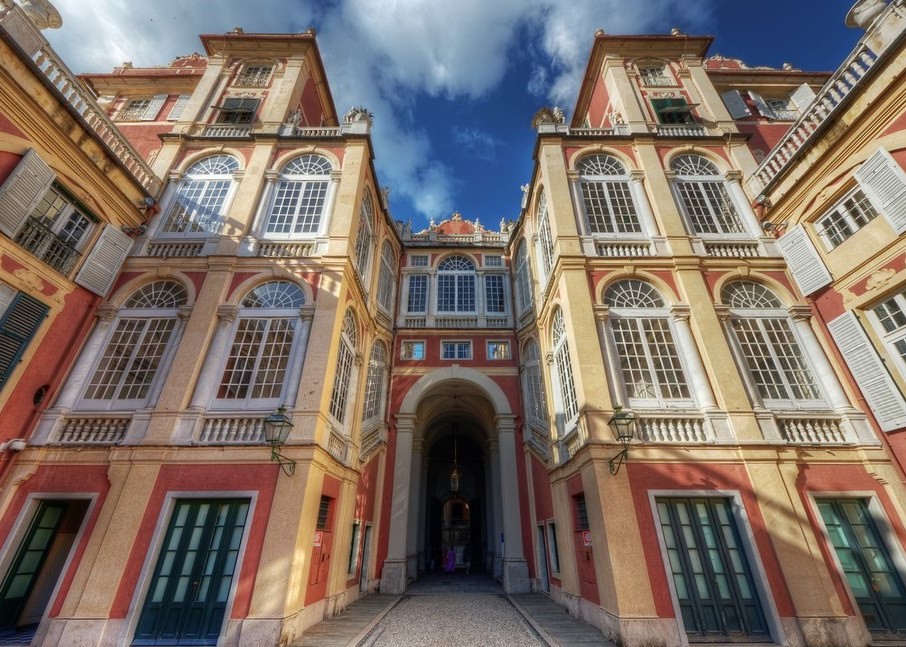
 italia.it
italia.it
Italian culture and history: Italian culture and history Genoa, the Strade Nuove and Palazzi dei Rolli
- WTI Magazine #150 Apr 23, 2022
-

 italia.it
italia.it
Genoa’s historic center - Ancient Italian Marine Republic and today Capital of Liguria - is the seat of splendid artistic and architectural treasures. Splendid artistic and architectural treasures. The Site includes the Strade Nuove (“New Roads”), where stand the magnificent “Palazzi dei Rolli,” a series of noble abodes in the Renaissance and Baroque styles, built between the 16th and 18th Centuries.
These elegant palaces conveyed the magnitude and splendor of Genoa to the world, and they were included in the citizen registers (the rolli, essentially, rolls). From these rolli, certain residences were chosen as the lodging for illustrious guests on State visits.
The 42 palaces, completely restored, constitute the very first example in Europe of urban planning realized in cooperation with citizens, authorizing a homogeneous design in order to meet specific organizing, representative and diplomatic needs.
It was in 1551, during the oligarchical Republic’s flowering that, once re-established by Admiral Andrea Doria, saw the beginnings of the construction of the Strade Nuove which were destined to become the “well-off quarter” of the city: here one would find the residences of the most important aristocratic families of the age, and the new governing class. The first “rolli” were officially distributed in 1576, and they contained a list of palaces that were placed into varying categories (called bussoli) based on quality (similarly to the classification of hotels by number of stars today).
he architectonic refinement of the palaces, the elegance of their facades, the rich and elaborate decorations of the interior artworks, the imposing stairways just inside the entrances, the internal courtyards featuring splendid loggias and verdant gardens – all render the palaces singularly unique places to visit.
The most prestigious palaces that made up the first category of the rolli are located in Via Lomellini, Via Garibaldi and Via Balbi. Some of the most beautiful are the 16th-Century Palazzo Rodolfo and Francesco Maria Brignole, also known as the Palazzo Rosso or “Red Palace,” and the 15th-Century Palazzo Luca Grimaldi or Palazzo Bianco, and Palazzo Niccolò Grimaldi or Doria Tursi, the most majestic of Via Garibaldi. Today these three residences host the first section of the Museums of the Strada Nuova, as well as important Italian, Flemish and Spanish art collections, among which the works of Guercino, Veronese, Antoon Van Dick, Caravaggio, and the celebrated Maddalena Penitente ("The Penitent Magdalene") by Canova stand out.
Then, in Via Balbi is the Palazzo Reale - finished in the 1600s for the Balbi Family – in addition to the residence of the Royal Family of Savoy. The palace, today a museum of 23 rooms and halls, cannot but remain impressed on the memory of each visitor for its monumental atrium with 18th-Century stuccoes, the hanging gardens, the noble apartments on the second (third) floor, the Sala del Trono (Throne Room), the Ballroom, and the Hall of Mirrors.
Finally, Palazzo Doria-Spinola is situated in Largo Eros Lanfranco; constructed for Admiral Antonio Doria (relative of the more famous Andrea), the palazzo boasts magnificent drawing rooms, a Renaissance courtyard, and frescoes in the renowned Sala degli Arazzi (Tapestry Room) and Salone, or Reception Hall. And not to left out is Palazzo Durazzo-Pallavicini, rather remarkable for the Renaissance elegance of its colonnades, grand stairway and hanging gardens.
Indeed, naming all the palazzi on the Rolli is next to impossibile: but just one visit will take those who wander its central streets on a journey where it seems time has stopped, and where they can relive the pomp, court dances and Treaties of State that once were.